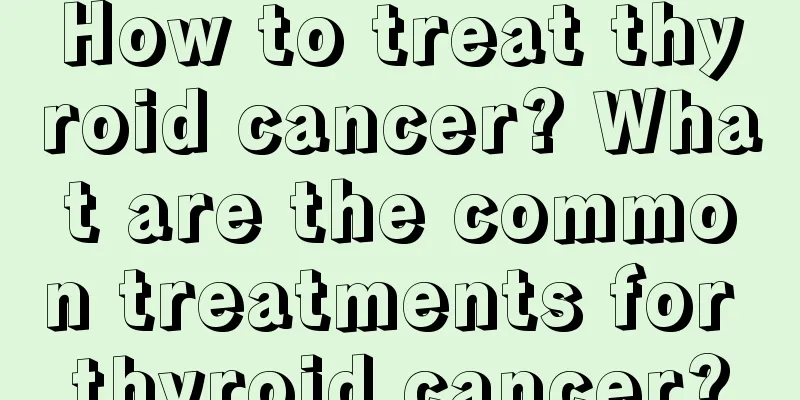How to treat thyroid cancer? What are the common treatments for thyroid cancer?

|
Thyroid cancer is pathologically divided into papillary adenocarcinoma, follicular adenocarcinoma, undifferentiated carcinoma, and medullary carcinoma. The main treatment methods are: (1) Surgical treatment: Surgical resection is the main treatment method. Different surgical methods are used according to different pathological classifications. During the operation, the recurrent laryngeal nerve should be damaged as much as possible, and the cervical lymph node dissection should be performed. (2) Radiotherapy: Anaplastic thyroid cancer progresses rapidly, with compression symptoms and distant metastasis appearing 2 to 3 months after onset. Surgery is generally unable to completely remove the tumor and is likely to cause more blood metastases. Treatment is mainly radiotherapy. (3) Radioisotope therapy: The therapeutic effect mainly depends on the amount of iodine-131 (131I) taken up by the tumor. Highly differentiated papillary adenocarcinoma and follicular adenocarcinoma take up more radioactive iodine and have better therapeutic effects. Undifferentiated cancer has lost the structure and properties of the thyroid gland, so it takes up very little radioactive iodine, resulting in poor therapeutic effects. Medullary carcinoma is ineffective for radioisotope therapy. (4) Radioactive particle implantation: Radioactive particle implantation can effectively control tumor development. At the same time, because the radiation exposure is mainly confined to the inside of the tumor, the systemic reaction is mild and the impact on the surrounding normal tissues is small. (5) Argon-helium cryotherapy: For patients who cannot undergo surgical resection or cannot tolerate surgery, argon-helium cryotherapy can effectively relieve tracheal compression symptoms and kill some tumor cells. As a palliative treatment for thyroid cancer, it can effectively improve the patient's symptoms and prolong life. (6) Radiofrequency, microwave and other treatments: As part of the local treatment of thyroid cancer, they have the characteristics of less trauma, faster recovery, definite efficacy and fewer complications. They can be used for palliative treatment after tumor recurrence or failure of radiotherapy. (7) Electrochemical therapy: For tumors that cannot be surgically removed or recur after surgery, electrochemical therapy can significantly shrink the tumor or even make it disappear. The treatment method is simple and causes little damage. |
<<: What are the benefits of breastfeeding? Can breastfeeding prevent breast cancer in women?
>>: How long can you live with melanoma? Melanoma treatment
Recommend
What is the use of expired toothpaste
Many people always throw away expired toothpaste....
What is the most effective way to remove odor from a new car?
There will be an unpleasant smell in the newly pu...
What to wear when traveling in Yunnan
Nowadays, more and more people go out to travel t...
What are the best ways to remove wrinkles?
The appearance of wrinkles is very sensitive to m...
Do you know the effects and contraindications of wax apple?
Wax apple is a fruit mainly distributed in Taiwan...
What can be found out by plain brain scan
The human brain is the most important part of the...
Introduce the causes of cervical cancer patients
Cervical cancer is a common malignant tumor of th...
How to treat stage II ovarian cancer
The treatment of ovarian cancer must be timely an...
Is it necessary to treat liver cancer in the late stage? What is the best treatment for liver cancer in the late stage?
When liver cancer is accompanied by ascites, jaun...
How to determine if double eyelids are enlarged?
A beautiful appearance can make one's charm m...
Be careful that frequent miscarriages may cause cervical cancer
The incidence of cervical cancer has increased si...
What are the best foods to eat when you have liver cancer? Three foods are essential for liver cancer patients
Liver cancer is a very serious disease. If people...
How to treat cervical cancer? What are the common misunderstandings about cervical cancer treatment?
In recent years, more and more women have been di...
How to determine whether the discharged substance is old stool
Each of us needs to go to the toilet, urinate and...
How to make Sichuan pickled ginger
In addition to hot pot, Sichuan is also very popu...









